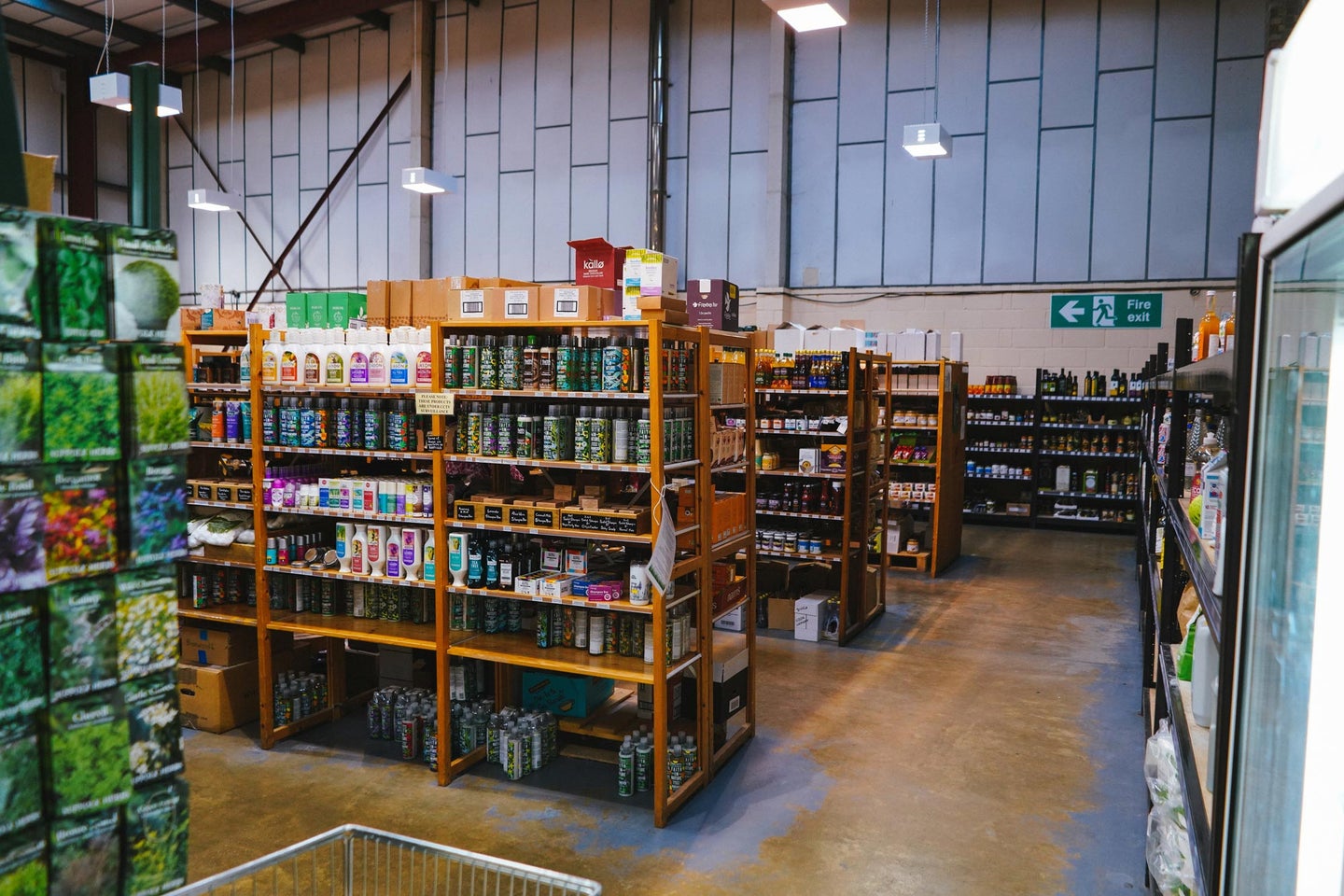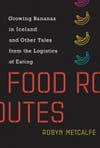COVID-19 has exposed serious food-security issues in the US. Technology can help.
Humans armed with creative solutions are finding ways to prop up supply chains.

Robyn Metcalfe, a food historian and food futurist, is a lecturer and research scholar at the University of Texas at Austin, director of Food+City, and author of Food Routes. This story originally featured on the MIT Press Reader.
By mid-February, we watched our food supply become headline news. Worries about toilet paper shortages quickly shifted to whether we’d ever enjoy pasta again, not to mention whether we’d enjoy that meal in the presence of our loved ones. Just a few months before, we were debating whether we’d disavow meat in our diet or if vertical farms in cities would bring food closer to us. Whether we would eat at all had never occurred to us.
With the gathering momentum of COVID-19 infections, the urgency and fear of losing our access to food is palpable. Food logistics, an industry that operates invisibly most of the time and certainly within the deep underbelly of the food supply chain, is suddenly in the spotlight.

You can rest assured that while consumers are stunned and stockpiling, our food supply chain is adapting. Protocols that enable the supply chain to flex during these occasions already exist. Some plans are regularly updated by foodservice companies, grocery chains, shipping companies, and NGOs, such as the Red Cross. These plans incorporate knowledge gained through past crises, such as 9/11 or hurricanes Sandy and Katrina. While the government weighs in with disaster relief, and agencies such as FEMA are authorized to manage resources, public-private partnerships have the potential to make the most impact.
During the aftermath of Hurricane Katrina in 2005, for example, Walmart sent truckloads of food to the Gulf Coast, utilizing its logistics network of vehicles, warehouses, and technology to feed survivors that FEMA failed to reach. Walmart’s distribution center in Brookhaven, Mississippi, was filling trucks with supplies even before Katrina landed on the coast, and truckloads of water arrived before FEMA could get resources mobilizing. Sysco, meanwhile, provided emergency relief, in partnership with the Red Cross, after hurricane Dorian devastated the Bahamas last year. Now we are witnessing these partnerships at multiple levels, from local restaurants that are moving to food delivery, to transportation networks that are lubricating potential friction points by hiring more workers—Amazon’s hire of an additional 100,000 workers, for example — and the easing of payments and credits for food purchases. These partnerships include big corporations and small businesses alike.
They are being made as delivery and stocking adaptations are moving into place. It’s difficult to know how long the surges in demand for long shelf-life items will last. And the flow of food through the supply chain requires time to adjust. Moving more food through distribution centers, inventing ad hoc inventory tracking systems, and leveraging new tracing and tracking technologies are helping to smooth the kinks. And there will be kinks.
Some pundits suggest that our global food supply chain will permanently change. The benefits of specialization (growing bananas in Costa Rica and avocados in Mexico, for instance) make sense in terms of global employment and value creation. And we will indeed grow more food locally for the sake of food security and economic development. So we should carefully craft policies and tariffs that allow for a global food system that can adapt when whole regions of food production collapse. Notice that the Svalbard Seed Vault in Norway recently took in the largest number of seeds in its entire history.
This moment is also a time to reconsider how we provide resilient food security. Food security is critical to national security and public health and should be reframed to include a widely distributed network. We should utilize the existing network of distribution centers, technology, food safety practices and resources of our industrialized food industry. And we should also extend them to the local level with micro-warehouses, improved predictive software, and upgraded transportation networks that use less energy and have smaller footprints. We should make our existing distributed supply chain even more distributed, moving more storage and food safety resources closer to all of us.
This would be a new public and private partnership. Include startups, increase the use of technology for tracking and tracing our food so that we can see inside the food supply chain instead of hoarding food because we think the supply chain is empty.
What we are experiencing is indeed a stress test of our food supply chain, nationally and globally. But constraints and stress invite creative solutions. Let’s take advantage of its moment in the limelight to increase our understanding of how it works and how we can find creative ways to relieve its friction points.
Lastly, let’s not forget who is driving the trucks and stocking our warehouses. Humans, armed with technology, are finding ways around the obstacles. Notice the food delivery person who makes a call to us to explain that he will be late, not to lose patience. Our restaurant that puts their menus online and invites us to dine in for a change. The gym that offers our workouts online along with suggestions for vitamins that may improve our immune systems. Machines aren’t doing this, humans are. At last, we see how we matter more than ever. And how technology will help us, not replace us.
When we settle back into our routines post-pandemic, I urge you to stay focused on the friction points that surfaced within our food supply chain. They will offer a fresh starting point for those who want to improve our global food system. Vegetarians, flexitarians, and Rotarians should all show up to debate how we can come together and work with big food, small food, high tech, and low, to make sure we all have food at our table.